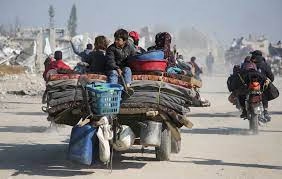Costa Rica Joins Latin American Nations in Enforcing Electricity Rationing Amid Drought
Costa Rica, the latest Latin American country grappling with severe drought, announced on Thursday its decision to implement electricity rationing as a result of dwindling water levels in dams crucial for hydro-electric power generation.
Officials attributed the low water levels to the El Nino weather phenomenon, labeling this instance as the most challenging in the nation’s history, as stated by Roberto Quiros, director of Costa Rica’s ICE electricity institute, during a press briefing in San Jose.
Commencing on Monday for an unspecified duration, the rationing measures aim to mitigate the strain on the country’s hydro-electric plants. Despite Costa Rica’s heavy reliance on renewable energy sources, with approximately 99 percent of its electricity sourced from such means, around three-quarters of this energy is derived from hydro-electric facilities.
According to Berny Fallas, a climate expert at ICE, the current drought represents an unprecedented event, with no comparable occurrence in the past five decades.
Highlighting broader climate trends, the World Meteorological Organization’s recent report underscored the impact of El Nino and climate change on Latin America and the Caribbean, resulting in record-breaking warmth and significant weather-related disasters.
Central America bore the brunt of intense drought conditions, leading neighboring Panama to impose restrictions on traffic in the Panama Canal. This marks Costa Rica’s first instance of electricity rationing since 2007, coinciding with a previous El Nino-induced water crisis.
To alleviate concerns, ICE assured that critical sectors such as hospitals, essential services, and industry will be spared from the electricity cuts.
Elsewhere in the region, Ecuador and Colombia’s capital, Bogota, have also grappled with electricity and water rationing, underscoring the regional challenges posed by climate variability and extreme weather events.



